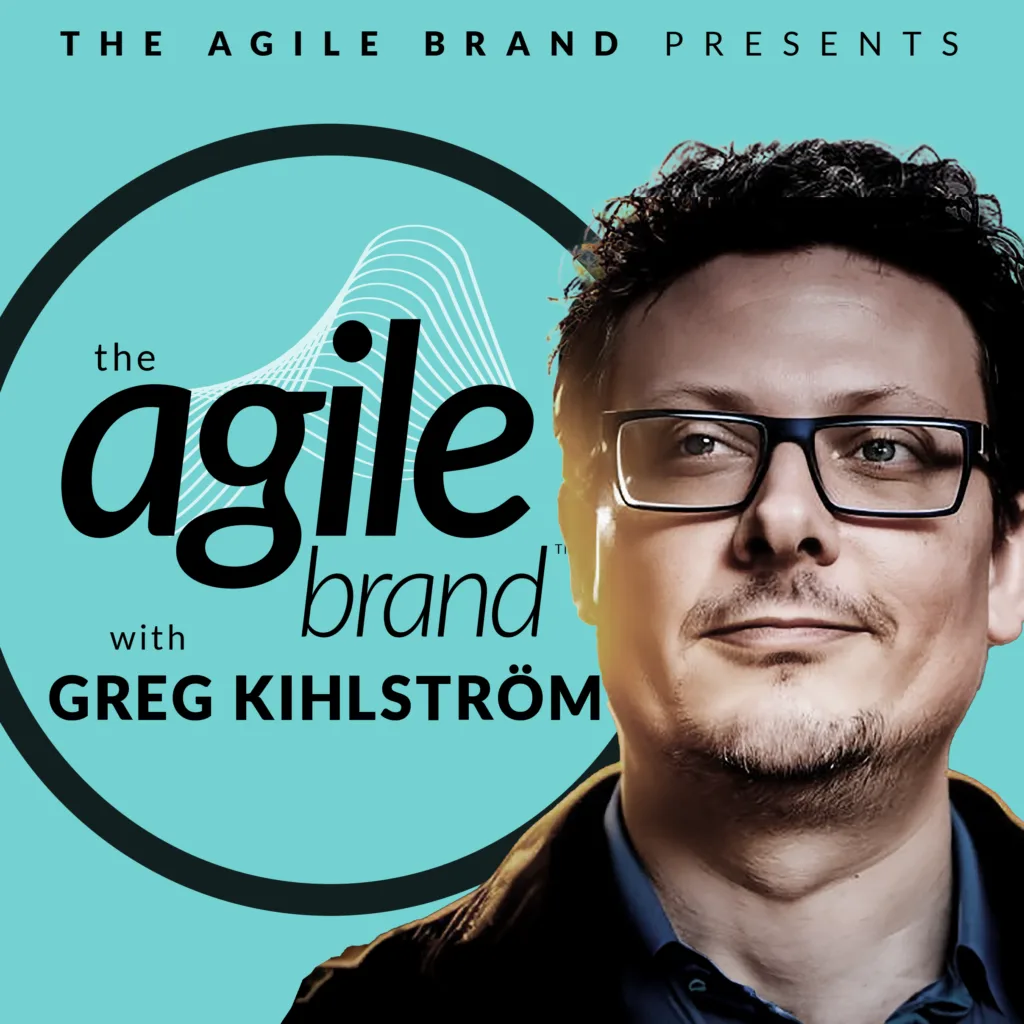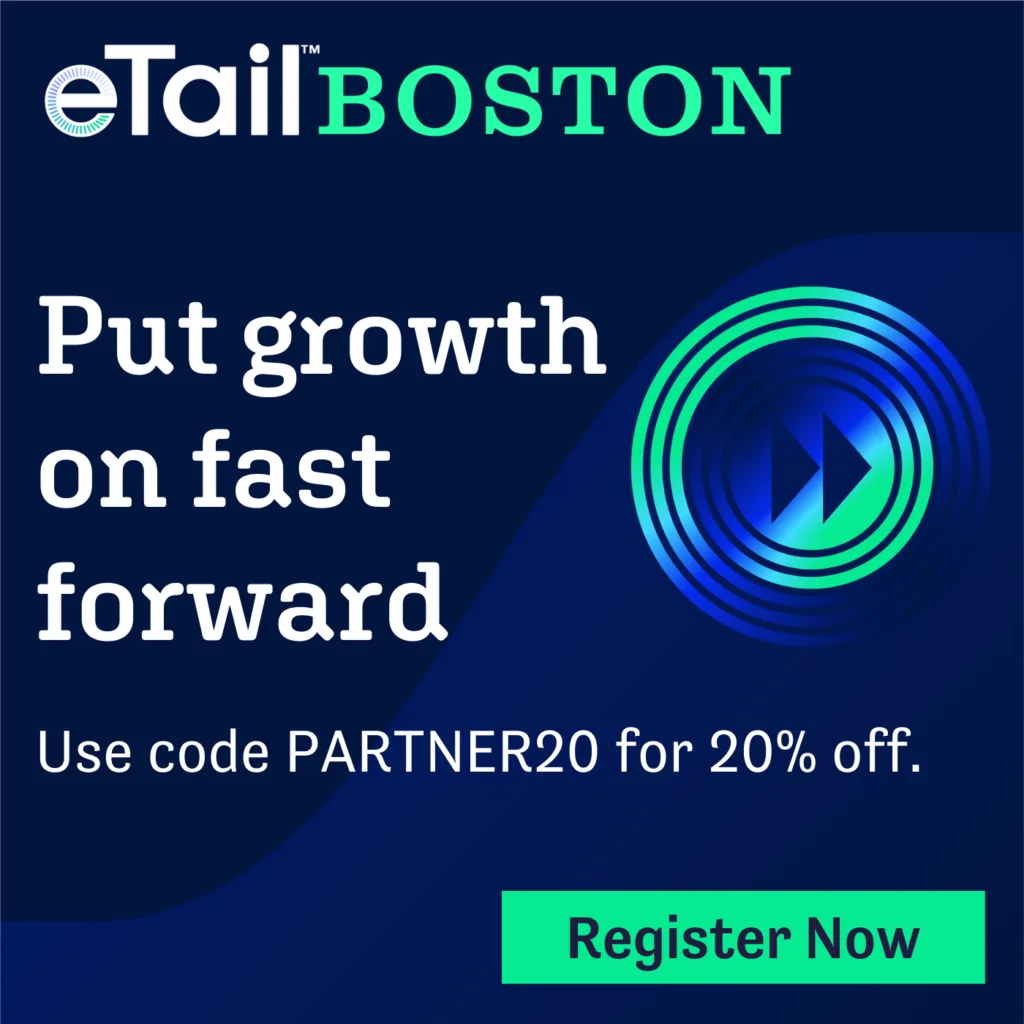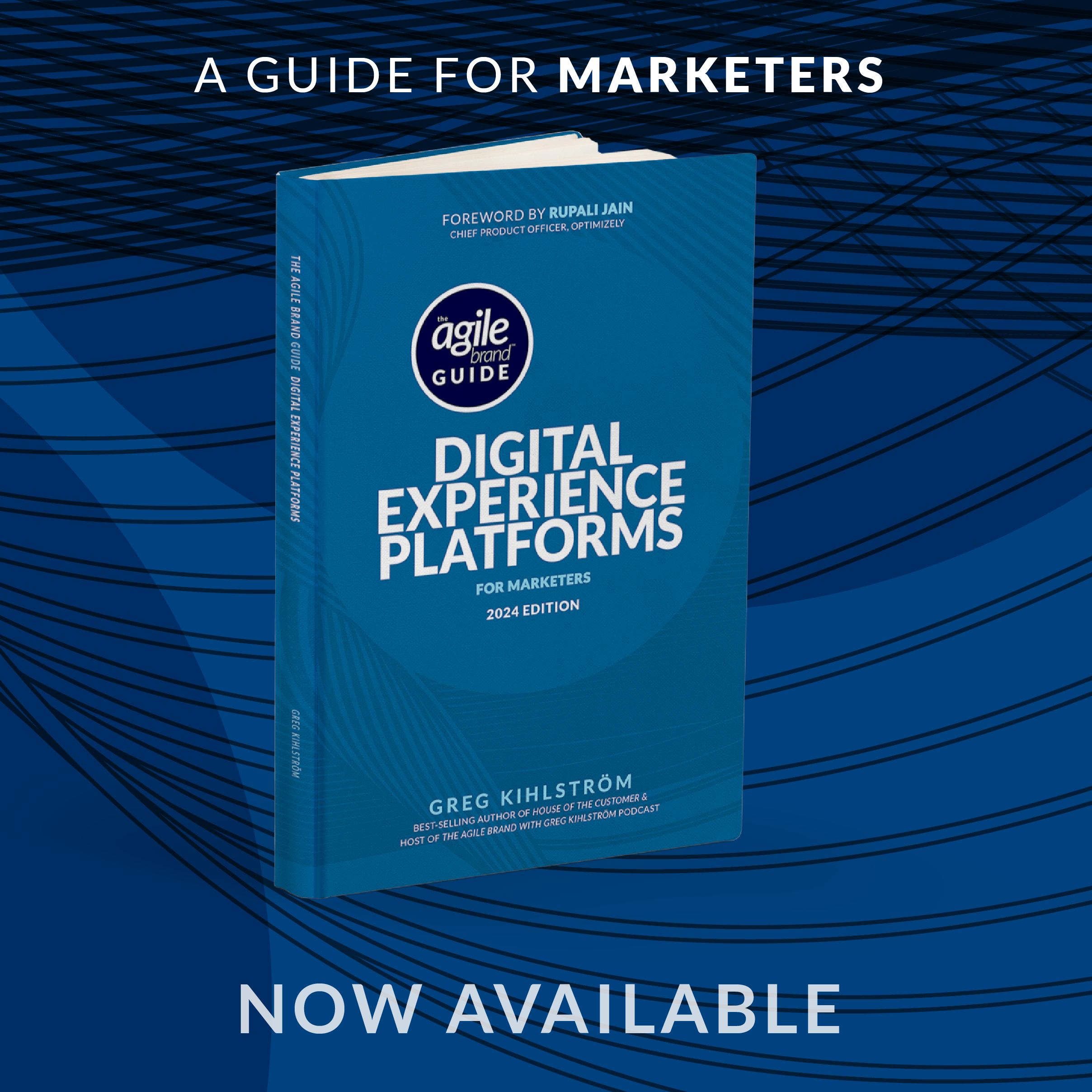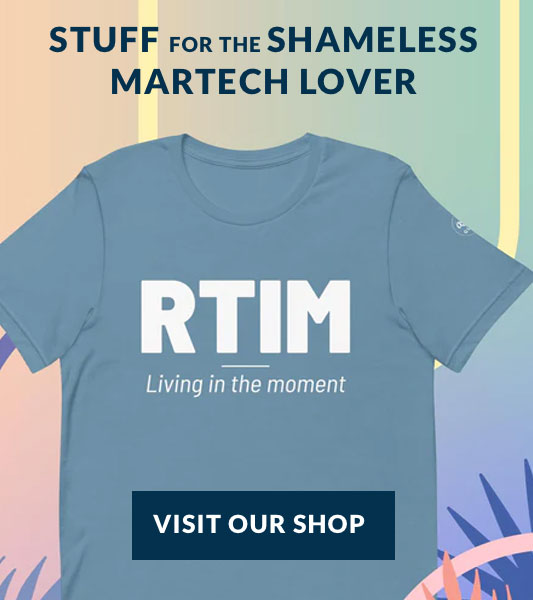You’ve likely heard us talk about composable approaches a bit on this show. Today, we’re going to explore what it looks like to take a composable approach with a customer data platform with Kyle Martinowich, Senior Partnership Lead at GrowthLoop. He’s going to share insights on the power of composable Customer Data Platforms and how they are reshaping businesses’ approach to data segmentation and customer relationship management.
Resources
Growthloop website:
Register for the Medallia CX Day webinar: Building Loyalty: How Top Brands Create Forever Customers with CX – https://bit.ly/3M7dkQM
Connect with Greg on LinkedIn: https://www.linkedin.com/in/gregkihlstrom
Don’t miss a thing: get the latest episodes, sign up for our newsletter and more: https://www.theagilebrand.show
Check out The Agile Brand Guide website with articles, insights, and Martechipedia, the wiki for marketing technology: https://www.agilebrandguide.com
The Agile Brand podcast is brought to you by TEKsystems. Learn more here: https://www.teksystems.com/versionnextnow
The Agile Brand is produced by Missing Link—a Latina-owned strategy-driven, creatively fueled production co-op. From ideation to creation, they craft human connections through intelligent, engaging and informative content. https://www.missinglink.company
Learn more about your ad choices. Visit megaphone.fm/adchoices
Transcript
Greg Kihlstrom:
You’ve likely heard us talk about composable approaches a bit on this show. Today, we’re going to talk about what it looks like to take a composable approach with a customer data platform with Kyle Martinovich, Senior Partnership Lead at GrowthLoop. He’s going to share insights on the power of composable CDPs and how they are reshaping businesses’ approach to data segmentation and customer relationship management. Kyle, welcome to the show. So before we dive in, though, why don’t you give us an overview of your role at Growth Loop and how you’ve come to focus on this area of Composable CDPs?
Kyle Martinowich: Great, thanks. So yeah, today I run the relationship between Growth Loop and Snowflake. Growth Loop being the composable CDP and Snowflake being one of the premier data warehouses in the US today. My job is to help the Snowflake team and our joint customers understand the value and the reason why marketers today find a composable CDP something that they need in their tool stack versus how they used to go about doing marketing automation previously.
Greg Kihlstrom: Yeah, great, great. Well, yeah, let’s let’s dive in here. And we’re gonna start with just kind of understanding the shift from Traditional CDPs, it’s funny, they’ve been around for a while. I know the Gartner Quadrant just came out 11 years after the fact, but it’s been around probably long enough to say traditional CDPs exist. So talking about this shift from traditional to composable CDPs, First, can you explain the core differences between what is a traditional CDP and what’s a composable CDP, and what are limitations of a traditional approach versus what composable brings to the table?
Kyle Martinowich: Absolutely. So a traditional CDP is something where consumption and data lives inside of the SaaS tool itself. So probably around seven to 10 years ago, the beginnings of what was a customer data platform started to come up. I think I was at Oracle at the time. Their first tool called Unity was one of the first to the market. You had other tools out there like TreasureData, ActionIQ, and Parity, who were just starting to build SaaS platforms that were going to allow marketers to ingest different streams of data and create what some people call the golden record or the customer 360. And what I mean by that is you would take stuff like transactional databases that were traditionally in a warehouse and combine them with marketing data such as event clickstream from email, from web analytics, from e-commerce purchases, also mobile application data, and put those into these traditional CDPs or SaaS applications, which would then combine them and allow a marketer to get a single view of the customer. That was the original purpose of the traditional CDP, which was to get a single view of the customer. transitioned to around five years into that growth period for CDPs, for customer data platforms, and what happened was is that the tools, these traditional CDPs, were not able to handle the breadth of the data that these businesses were starting to collect on their consumers. you were starting to find challenges where the marketing automation tools and the CDPs were not able to take in the amount of event stream data around the customer and process it without incurring extremely high costs to the business. And so this is where the composable architecture started to come in, where you would look at your data warehouse, whether in my case, I work alongside Snowflake, but we have partnerships with AWS Redshift, with Google BigQuery, and you’re able to now start taking that data, the data that I described around the Customer 360, and bringing that into the warehouse. And there are no limitations in the data warehouse to how much you can bring in. Then we were able to bring tools that would not take that data out of the warehouse and put them on top of the warehouse in the composable fashion. So that’s what Growth Loop was built for. So this is a NoSQL activation layer and segmentation layer that can utilize that full breadth of that customer 360 inside of the warehouse without having to move data out of the warehouse, out of the SaaS marketing automation tools. and into these traditional CDPs.
Greg Kihlstrom: Yeah. And so, you know, you kind of touched on this, but just to just to kind of underscore here. So, you know, obviously, lots changed in the last, you know, five years, six years, let alone, you know, five months. These days, you know, there’s scaling issues. There’s increased amounts of channels that marketers need to deal with. There’s greater diversity of data. So, you know, you talked about kind of the benefits of composable to an extent here. But, you know, is this, is scaling and data diversity, like how do composable CDPs stack up to those traditional ones in terms of that?
Kyle Martinowich: I think scalability is outside of privacy. Those are the two things that are most important to an organization today. And so we’ll take scalability and how important that is. I think that Consumers are starting to interact with businesses in pretty much every possible touchpoint that us as marketers and us as consumer experience individuals think about. So that could be call centers, mobile application chatbots, websites, purchasing on in-store if it’s possible for retailers. So there are just a variety of touchpoints that now you are communicating with your with your consumers or with your customers. And all of that data needs to be combined in a location that accepts that much data. And traditionally, the CDPs that were built first just weren’t built. They weren’t data warehouses. They’re not built for that much scale in the amount of consumer data and touch points that are necessary to actually meet the consumer where they want to be communicated to at the time of their purchase or the time of their unhappiness or happiness with you as a as a business. Yeah.
Greg Kihlstrom: Yeah, well, and I think that’s a good segue to, you know, step one is collecting the data, you know, storing it in the right way is making it accessible. And then, you know, the next thing is, well, what do we what do we do with it? You know, you touched on on meeting customers where they are and fulfilling their their needs. And so, you know, this this leads to talking about how a composable CDP you know, works through like marketing ops and data teams. So, you know, how, how should marketing teams look at a composable CDP in terms of, you know, delivering that, you know, hyper personalized, you know, one-to-one omni channel, you know, it’s buzzword bingo, I know, but like, you know, delivering all those things that customers are increasingly expecting.
Kyle Martinowich: I think that the, The blending of the new CMO as the data-driven CMO is helping accelerate this conversation. I think there used to be a dichotomy between engineering and marketing that caused friction. But I believe that that time, those barriers to entry are starting to fall quickly. We see most of our CMOs who are now hiring data-driven marketing analytics or consumer insights teams to help bridge the gap between the IT traditional usage of data, which would just be warehouse, and then actually using that data for activation and for personalization use cases. The one thing I will say, and I think that the way that businesses really start to take off and utilize this composable structure is by actually defining the use cases first, and then analyzing the data that’s necessary to produce that use case. If you’d like me to give an example, I can. Yeah, definitely. Great. We used to always talk about cart abandonment. That used to be like the number one thing that we heard from retailers. But I think that that is a simple use case. Now, if we get to a use case more where marketers are now starting to build multi-channel journeys, right, that’s a big thing, journey orchestration. To run a multi-channel orchestration campaign for a cohort of customers you are going to need to look at a variety of different data points within your database. And so if we say now a card abandonment program, that can be now not just an email after they had abandoned the card, it could be a text message, it could be an in-app SMS, it could be a bunch of Facebook ads, it could be a variety of different touch points upon which you may interact with your customer. And once you’ve decided that that’s the journey you want to put them on, you need to reverse engineer all of the data points. So you need to go down and say, OK, I need data out of Google Analytics. I need data out of Twilio. I need data out of our e-commerce platform, like a Magento or something like that. And once you’ve defined the pieces of those data that you need, that’s where marketers can now go to their IT counterparts and say, hey, these are the tables and transactions that I need to be putting into my warehouse so that I can build a proper customer 360. And I do believe that it starts on the top level business objective, whether that’s acquiring new customers, retaining existing customers, upsell or cross sell. Once you’ve decided on those, you can start to figure out where the underlying data is, lives, and where you need it to be to be able to be performant in those use cases.
Greg Kihlstrom: defining the use case first versus, because there’s a lot of things that can be done, but should they be done and all that. You briefly touched earlier on data privacy and stuff, and I wanted to just get to that real quick here as far as how does a composable platform facilitate things like data governance, compliance, you know, obviously regulations, any company operating internationally is dealing with multiple regulations, you know, how does how does a composable CDP operate there?
Kyle Martinowich: I think very simply a composable CDP is a query in place application. So the data that a company owns that may have PII or PHI in these regulated industries like healthcare, financial services, and even, you know, basic consumer data needs to be regulated this day with CCPA and other regulations that are out there. I think it’s important that Once a company makes the decision to put their time and effort into building a customer 360 inside of a data warehouse like the ones we mentioned before, the movement of that data out to other SaaS tools like an email tool, an SMS tool, a web personalization tool, that creates the opportunity for situations to go awry for the business, whether that, you know, leaves it open to PII leaking out or data living in an S3 bucket that should not be there. And, you know, people being able to come in and, you know, access that data. So I think by building the Customer 360 in the warehouse and using a query in place composable architecture for CDP, you eliminate any of the data privacy issues. You completely now have decided to govern the data in which the way that the business wants, who has access to what tables, who has access to what PII. And that right there starts to build up the muscle internally at these companies of the importance of this composable structure versus you know, every day or every hour shipping data to these downstream destination tools or upstream destination tools, depending on what you’re doing with your data.
Greg Kihlstrom: So we’ve talked about a lot of the benefits of a composable CDP and what it allows, but obviously there’s some integration that needs to get done to do this. You touched on some of those things as far as thinking ahead of use cases and everything, but what are some common challenges that businesses face or, you know, even some things to think they need to think through when when integrating composable CDPs into an existing data infrastructure.
Kyle Martinowich: I think the first thing that every business should look at is why they have decided that the composable architecture is right or wrong for them. I never think it’s wrong. And that’s just my opinion. But some companies might have a different idea. So I think that they need to make a decision internally, whether a composable architecture is going to be something that is right or wrong for them. And the reason I say that is because depending on where you are as a business, and where you’re headed as a business, those things can make a determination if this is the right or wrong time for you to take that action. For example, you talked about ingestion. Ingesting data can be easy and it can be hard, depending on the tools that you are already working with. For example, we work with partners like Braze and Iterable. They have done a great job in moving towards this composable architecture framework with these clouds. They now have things like data sharing, where you’re able to move some of that data in between these applications without having to push it into, say, an API and then into a standard bucket and then move it into the warehouse. Now they have just native application sharing within some of these warehouses. So I think the warehouses plus the tools for data activation, your email, your SMS tools, they have already started to understand the importance of data sharing without having to move data from an ingestion and activation standpoint. So I think that is, that’s a great movement in the market and a clear sign that composability is correct. Yeah, yeah. Yeah. And then the last thing is the the no SQL use of getting the data or understanding what’s happening inside of the data. There’s something called the SQL crazy train that we have heard many, many times, which is a marketer wanting data and having not knowing how to write SQL and having to put out a Trello ticket or a JIRA ticket to get a count of the data. And that in itself, should be the one of the deciding factors. How much people how much people process and technology are we able to reduce by going to this type of framework? Yeah.
Greg Kihlstrom: Yeah, well, and because I mean, at the end of the day, the there’s lots of things that marketers are responsible for. But the responsibility of a CDP is to really provide that and maintain that unified customer profile. So, you know, kind of building on what you were just saying, you know, what what should marketers be keeping in mind to, you know, make sure that that that end goal of that unified customer profile is always kind of top of mind.
Kyle Martinowich: I think they should start with their business objectives. Again, I’m going to go back to the use cases and business objectives. I think that there are certain KPIs that all businesses that we interact with, Greg, are focused on. And I think that it usually starts with ROAS and CAC, and then it follows its way through CLTV, CSAT, and NPS for some of your more high-tech types of businesses. So I think that As long as the companies that are looking to move to the composable architecture understand the net positive effects that it’s going to bring, not only for operational efficiency within the business, but related to their KPIs for acquisition on things like ROAS. And I’m going to give an example here. And one of the best things that I think about Composable CDP for acquisition marketers is your ability to have access to the Customer 360 so that you can develop really tight seed audiences to the walled gardens. You know, the change that happened in the last three to five years with the walled gardens, only accepting seed audiences for lookalikes, I think, is really going to start pushing even more marketers to go to this composable architecture because to have the breadth of the data to understand what is an applicable customer so that you can go and retarget them on these walled gardens with very limited information about who you’re actually targeting is super key and very important today.
Greg Kihlstrom: Yeah. Yeah. And so you, you touched on this a little bit earlier as far as the, you know, marketers out there I know are familiar with the dynamics between IT or data or IT and data and, and, and the marketing department. you know, can you talk a little bit more about, you know, how does this change in terms of, you know, when you start moving to a composable approach and particularly with, with the customer data platform, but, you know, when you start moving to this approach, you know, what, what kind of changes and, um, what should marketing teams be keeping in mind in terms of these changes?
Kyle Martinowich: I think it’s time to lead to campaign. That’s the biggest change right there. I think that we’ve seen cases where a marketer requests data from their marketing teams and even in the CDP and it’s still taking three to five business days. In the world that we live in, with the amount of behavioral and firmographic changes that happen on a customer record, three to five days to run a journey, or to get a campaign out the door is, in my opinion, just is faulty at this point, right? I think We’re almost to the point where in the next, in my opinion, the future will be LLMs driving the journey, and they’ll be looking at real-time data, your activities, your behaviors in real-time, and then deciding on what channel and what communication that you’re getting. So I think that The faster that companies move to a composable architecture, they’ll have access to the breadth of the data and it’ll increase the speed upon which they are able to appropriately communicate with their customers, get their campaigns and their cohorts into the right journey so that they’re improving those KPIs that I talked about just a minute ago.
Greg Kihlstrom: Yeah, yeah, definitely. Well, you know, one last thing I wanted to talk about with you is looking ahead to the future and, you know, future of composable CDPs. What’s next from what you’re seeing? How do you see composable CDPs evolving? And as again, nothing seems to be getting any less complicated out there for marketers to need to deal with. But how do you see composable CDPs kind of evolving to match this?
Kyle Martinowich: I think today the big focus is on the ability to create audience cohorts. right now, no code, be able to utilize your data to create those great segments so that you can go market to them. I think the rise of Gen AI is going to remove audiences almost altogether. I think instead of having 20 audiences of 50,000 in each cohort, we’re going to go to 10 million individualized journeys. I think the companies that are fast to get their data into these warehouses get that base customer table, that golden record ready, the LLMs will are and are going to be good enough to then decide that everybody’s going to have their own journey. And it’s going to be able to match that journey against people who look like that previous campaigns, previous journeys that had happened in the past. And I think we’re going to go away from cohorts and go to an audience of one and go to hyper-personalization from the journey perspective. I truly believe that. I think that as compute costs come down, data enters the warehouse. The next logical step would be to activate those journeys one-to-one personalized out of the warehouse.
Greg Kihlstrom: I love that you’re saying that because I completely agree with that. I think that’s, I mean, as, as neat as, you know, chat GPT and, and, you know, some other gen AI things are, it’s like the, what I get really excited about is that, you know, we’ve been talking about, one-to-one personalization for, I feel like it’s been decades, but maybe at least a decade or so, we’ve been talking about, you know, personalization, hyper-personalization, but yeah, it does feel like we’re on the cusp of something really interesting and, you know, personas and cohorts and, you know, the things that you mentioned, they just, they always seem to fall a little bit flat when, when it comes to using them in real life. So yeah.
Kyle Martinowich: You can always tell that it’s not working when they have to do AB tests and holdouts and splits, right? If you have to do that, then you’re not a hundred percent sure. So that’s why I agree with you on.
Greg Kihlstrom: Yeah, absolutely. Well, Kyle, thanks so much for joining today. What’s a key takeaway that you hope our listeners will remember about what we talked about today about composable CDPs and customer data management?
Kyle Martinowich: I think the number one thing is all marketers and anyone thinking about composable CDP should again, start with a use case workshop internally and decide on what are the key KPIs, metrics and campaigns that are necessary for me to excel in my part of the business. And then what is the data that’s necessary to run those campaigns? And I think if people start there, their outcomes will be better when transitioning to a composable architecture.











